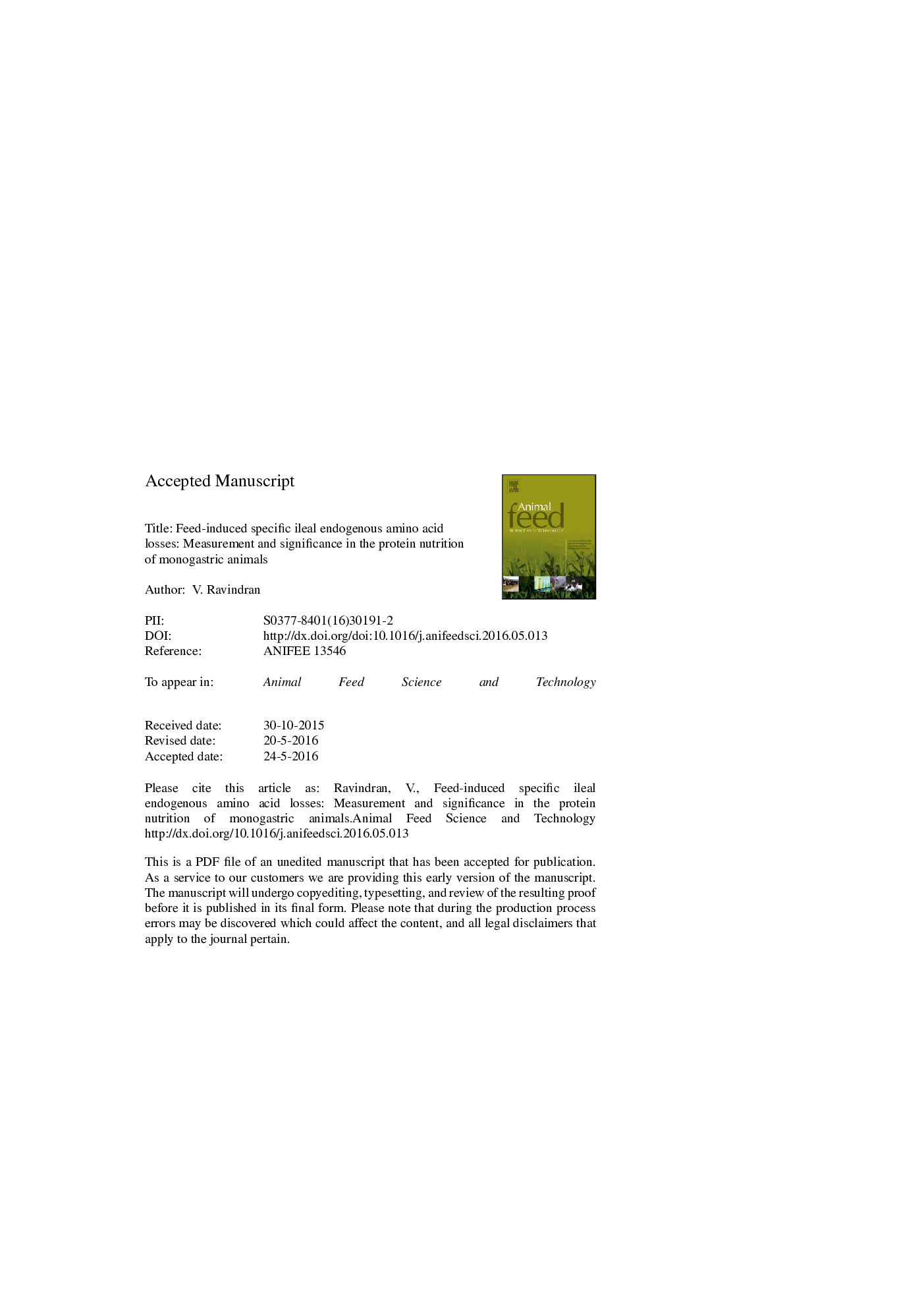| Article ID | Journal | Published Year | Pages | File Type |
|---|---|---|---|---|
| 5538934 | Animal Feed Science and Technology | 2016 | 33 Pages |
Abstract
The endogenous ileal amino acids recovered at the terminal ileum of monogastric animals comprises of two components, namely basal and specific losses. The basal losses are fixed and associated with feed dry matter intake, whereas the specific losses are variable and induced by the presence of dietary components, such as fibre and anti-nutrients. Currently there is no methodology available to directly measure the specific endogenous losses. These losses are calculated by determining the basal and total (basal plus specific) losses and then subtracting the basal losses from total losses. Two techniques, namely the guanidination and isotope markers, can be used for the determination of total endogenous amino acid losses. The fundamental features, specific applications and shortcomings of these two methodologies are discussed. Although the specific endogenous protein losses are significant metabolic costs to the animal, published data quantifying these losses are limited owing to the complexity of available methodologies.
Related Topics
Life Sciences
Agricultural and Biological Sciences
Animal Science and Zoology
Authors
V. Ravindran,
